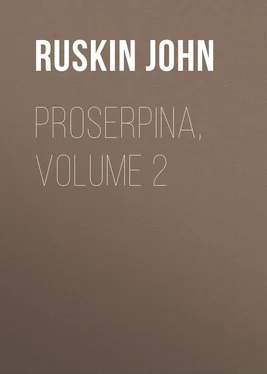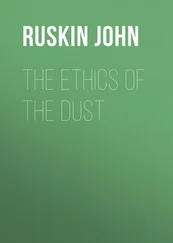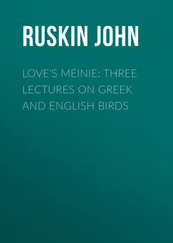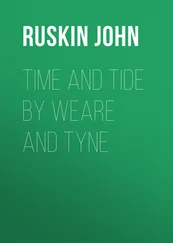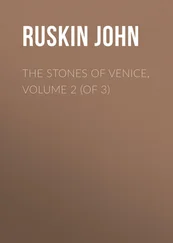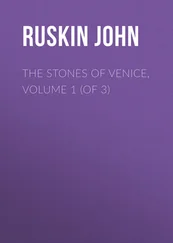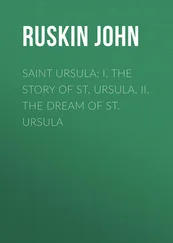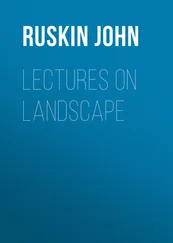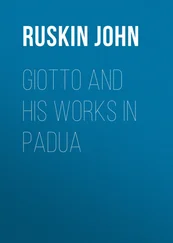John Ruskin - Proserpina, Volume 2
Здесь есть возможность читать онлайн «John Ruskin - Proserpina, Volume 2» — ознакомительный отрывок электронной книги совершенно бесплатно, а после прочтения отрывка купить полную версию. В некоторых случаях можно слушать аудио, скачать через торрент в формате fb2 и присутствует краткое содержание. Жанр: foreign_antique, Биология, literature_19, foreign_edu, на английском языке. Описание произведения, (предисловие) а так же отзывы посетителей доступны на портале библиотеки ЛибКат.
- Название:Proserpina, Volume 2
- Автор:
- Жанр:
- Год:неизвестен
- ISBN:нет данных
- Рейтинг книги:5 / 5. Голосов: 1
-
Избранное:Добавить в избранное
- Отзывы:
-
Ваша оценка:
- 100
- 1
- 2
- 3
- 4
- 5
Proserpina, Volume 2: краткое содержание, описание и аннотация
Предлагаем к чтению аннотацию, описание, краткое содержание или предисловие (зависит от того, что написал сам автор книги «Proserpina, Volume 2»). Если вы не нашли необходимую информацию о книге — напишите в комментариях, мы постараемся отыскать её.
Proserpina, Volume 2 — читать онлайн ознакомительный отрывок
Ниже представлен текст книги, разбитый по страницам. Система сохранения места последней прочитанной страницы, позволяет с удобством читать онлайн бесплатно книгу «Proserpina, Volume 2», без необходимости каждый раз заново искать на чём Вы остановились. Поставьте закладку, и сможете в любой момент перейти на страницу, на которой закончили чтение.
Интервал:
Закладка:
John Ruskin
Proserpina, Volume 2 / Studies of Wayside Flowers, While the Air was Yet Pure Among the Alps and in the Scotland and England Which My Father Knew
CHAPTER I
1. Although I have not been able in the preceding volume to complete, in any wise as I desired, the account of the several parts and actions of plants in general, I will not delay any longer our entrance on the examination of particular kinds, though here and there I must interrupt such special study by recurring to general principles, or points of wider interest. But the scope of such larger inquiry will be best seen, and the use of it best felt, by entering now on specific study.
I begin with the Violet, because the arrangement of the group to which it belongs—Cytherides—is more arbitrary than that of the rest, and calls for some immediate explanation.
2. I fear that my readers may expect me to write something very pretty for them about violets: but my time for writing prettily is long past; and it requires some watching over myself, I find, to keep me even from writing querulously. For while, the older I grow, very thankfully I recognize more and more the number of pleasures granted to human eyes in this fair world, I recognize also an increasing sensitiveness in my temper to anything that interferes with them; and a grievous readiness to find fault—always of course submissively, but very articulately—with whatever Nature seems to me not to have managed to the best of her power;—as, for extreme instance, her late arrangements of frost this spring, destroying all the beauty of the wood sorrels; nor am I less inclined, looking to her as the greatest of sculptors and painters, to ask, every time I see a narcissus, why it should be wrapped up in brown paper; and every time I see a violet, what it wants with a spur?
3. What any flower wants with a spur, is indeed the simplest and hitherto to me unanswerablest form of the question; nevertheless, when blossoms grow in spires, and are crowded together, and have to grow partly downwards, in order to win their share of light and breeze, one can see some reason for the effort of the petals to expand upwards and backwards also. But that a violet, who has her little stalk to herself, and might grow straight up, if she pleased, should be pleased to do nothing of the sort, but quite gratuitously bend her stalk down at the top, and fasten herself to it by her waist, as it were,—this is so much more like a girl of the period's fancy than a violet's, that I never gather one separately but with renewed astonishment at it.
4. One reason indeed there is, which I never thought of until this moment! a piece of stupidity which I can only pardon myself in, because, as it has chanced, I have studied violets most in gardens, not in their wild haunts,—partly thinking their Athenian honour was as a garden flower; and partly being always fed away from them, among the hills, by flowers which I could see nowhere else. With all excuse I can furbish up, however, it is shameful that the truth of the matter never struck me before, or at least this bit of the truth—as follows.
5. The Greeks, and Milton, alike speak of violets as growing in meadows (or dales). But the Greeks did so because they could not fancy any delight except in meadows; and Milton, because he wanted a rhyme to nightingale—and, after all, was London bred. But Viola's beloved knew where violets grew in Illyria,—and grow everywhere else also, when they can,—on a bank , facing the south.
Just as distinctly as the daisy and buttercup are meadow flowers, the violet is a bank flower, and would fain grow always on a steep slope, towards the sun. And it is so poised on its stem that it shows, when growing on a slope, the full space and opening of its flower,—not at all, in any strain of modesty, hiding itself , though it may easily be, by grass or mossy stone, 'half hidden,'—but, to the full, showing itself, and intending to be lovely and luminous, as fragrant, to the uttermost of its soft power.
Nor merely in its oblique setting on the stalk, but in the reversion of its two upper petals, the flower shows this purpose of being fully seen. (For a flower that does hide itself, take a lily of the valley, or the bell of a grape hyacinth, or a cyclamen.) But respecting this matter of petal-reversion, we must now farther state two or three general principles.
6. A perfect or pure flower, as a rose, oxalis, or campanula, is always composed of an unbroken whorl, or corolla, in the form of a disk, cup, bell, or, if it draw together again at the lips, a narrow-necked vase. This cup, bell, or vase, is divided into similar petals, (or segments, which are petals carefully joined,) varying in number from three to eight, and enclosed by a calyx whose sepals are symmetrical also.
An imperfect, or, as I am inclined rather to call it, an 'injured' flower, is one in which some of the petals have inferior office and position, and are either degraded, for the benefit of others, or expanded and honoured at the cost of others.
Of this process, the first and simplest condition is the reversal of the upper petals and elongation of the lower ones, in blossoms set on the side of a clustered stalk. When the change is simply and directly dependent on their position in the cluster, as in Aurora Regina, 1 1 Vol. i., p. 212, note.
modifying every bell just in proportion as it declines from the perfected central one, some of the loveliest groups of form are produced which can be seen in any inferior organism: but when the irregularity becomes fixed, and the flower is always to the same extent distorted, whatever its position in the cluster, the plant is to be rightly thought of as reduced to a lower rank in creation.
7. It is to be observed, also, that these inferior forms of flower have always the appearance of being produced by some kind of mischief—blight, bite, or ill-breeding; they never suggest the idea of improving themselves, now, into anything better; one is only afraid of their tearing or puffing themselves into something worse. Nay, even the quite natural and simple conditions of inferior vegetable do not in the least suggest, to the unbitten or unblighted human intellect, the notion of development into anything other than their like: one does not expect a mushroom to translate itself into a pineapple, nor a betony to moralize itself into a lily, nor a snapdragon to soften himself into a lilac.
8. It is very possible, indeed, that the recent phrenzy for the investigation of digestive and reproductive operations in plants may by this time have furnished the microscopic malice of botanists with providentially disgusting reasons, or demoniacally nasty necessities, for every possible spur, spike, jag, sting, rent, blotch, flaw, freckle, filth, or venom, which can be detected in the construction, or distilled from the dissolution, of vegetable organism. But with these obscene processes and prurient apparitions the gentle and happy scholar of flowers has nothing whatever to do. I am amazed and saddened, more than I can care to say, by finding how much that is abominable may be discovered by an ill-taught curiosity, in the purest things that earth is allowed to produce for us;—perhaps if we were less reprobate in our own ways, the grass which is our type might conduct itself better, even though it has no hope but of being cast into the oven; in the meantime, healthy human eyes and thoughts are to be set on the lovely laws of its growth and habitation, and not on the mean mysteries of its birth.
9. I relieve, therefore, our presently inquiring souls from any farther care as to the reason for a violet's spur,—or for the extremely ugly arrangements of its stamens and style, invisible unless by vexatious and vicious peeping. You are to think of a violet only in its green leaves, and purple or golden petals;—you are to know the varieties of form in both, proper to common species; and in what kind of places they all most fondly live, and most deeply glow.
Читать дальшеИнтервал:
Закладка:
Похожие книги на «Proserpina, Volume 2»
Представляем Вашему вниманию похожие книги на «Proserpina, Volume 2» списком для выбора. Мы отобрали схожую по названию и смыслу литературу в надежде предоставить читателям больше вариантов отыскать новые, интересные, ещё непрочитанные произведения.
Обсуждение, отзывы о книге «Proserpina, Volume 2» и просто собственные мнения читателей. Оставьте ваши комментарии, напишите, что Вы думаете о произведении, его смысле или главных героях. Укажите что конкретно понравилось, а что нет, и почему Вы так считаете.
